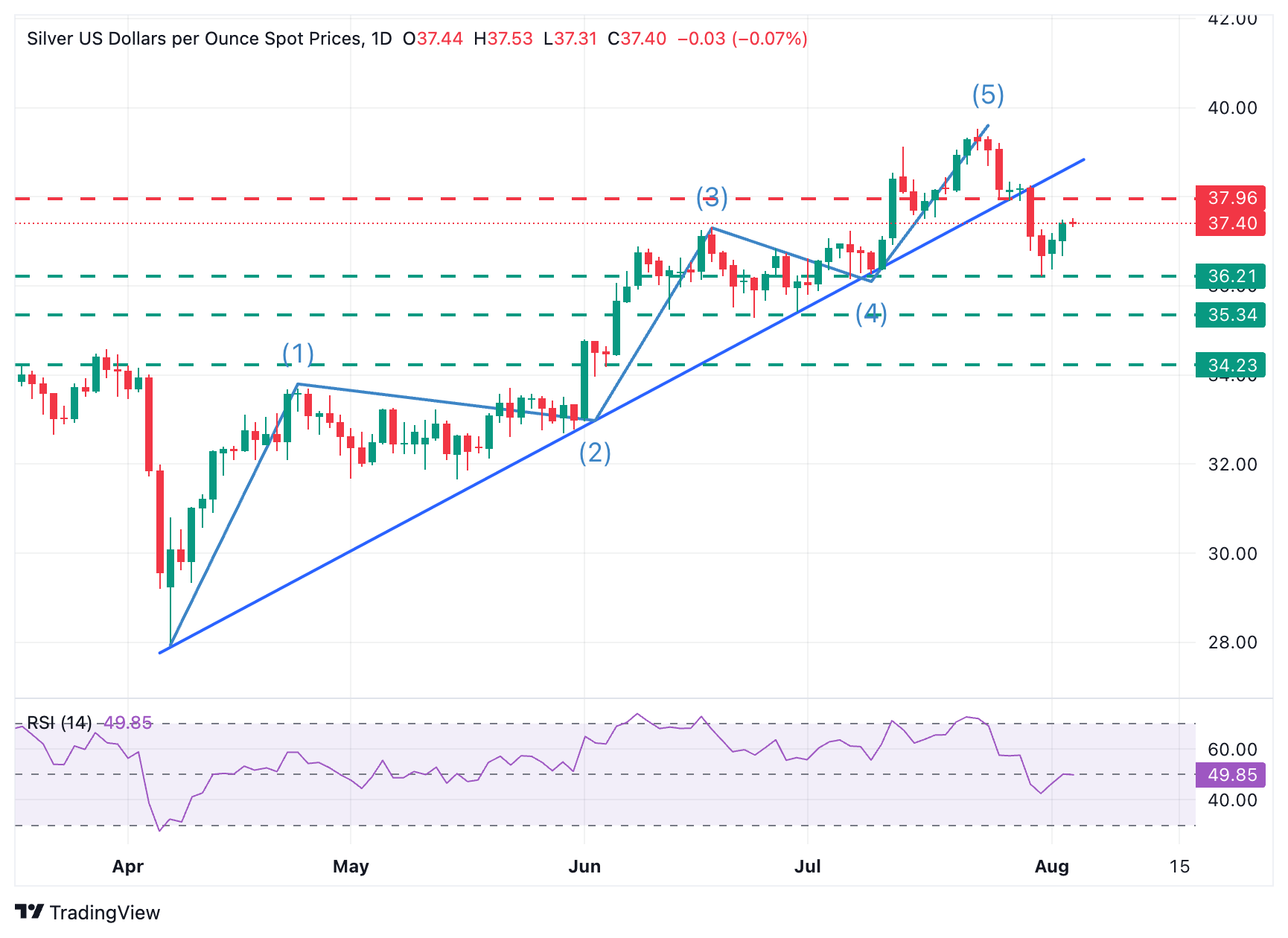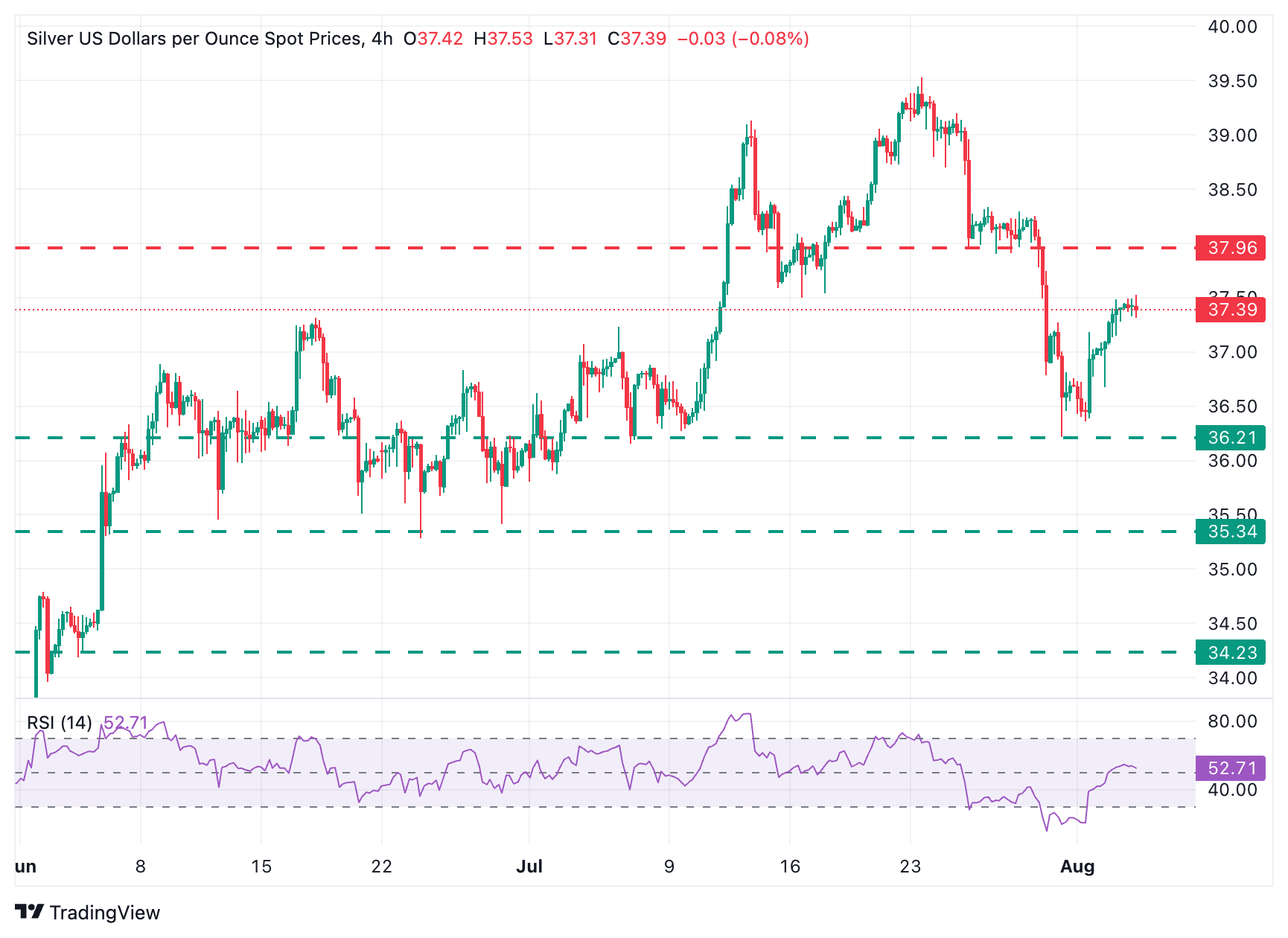- Silver recovery from $36.20 lows is struggling to find acceptance above $37.40.
- Precious metals are suffering on Tuesday amid a mild risk appetite and higher US yields.
- XAG/USD’s bulls are likely to be capped below resistances at $38.00 and $38.75.
Silver (XAG/USD) is holding quite well the moderate US Dollar’s recovery, but the precious metal remains stalled in no-man’s land above $37.00, with the 4-hour RSI at the 50 level, highlighting a lack of clear momentum.
Precious metals are struggling on Tuesday, with the US Dollar picking up, supported by a mild bounce in US Treasury yields. Hopes of Fed cuts are expected to keep USD upside attempts limited, but the Greenback has scope for further recovery, especially if US services activity beats expectations later today.
Technical analysis: Silver remains biased lower while below $38.00

The technical picture shows XAG/USD on a bearish reversal from the last four months’ bullish cycle. The break of the ascending trendline support last week confirms that view.
The current rebound is seen as corrective. The 4-hour RSI is bouncing up from oversold levels, yet losing momentum at levels above 50, with previous support at $37.95, and the broken trendline, now at $38.75, are highly likely to cap bulls.

To the downside, support is at Friday’s low of $36.21, which guards the path towards the June 24 and 29 lows, at $35.34 ahead of the early June lows, at $34.40 and $34.20.
Silver FAQs
Silver is a precious metal highly traded among investors. It has been historically used as a store of value and a medium of exchange. Although less popular than Gold, traders may turn to Silver to diversify their investment portfolio, for its intrinsic value or as a potential hedge during high-inflation periods. Investors can buy physical Silver, in coins or in bars, or trade it through vehicles such as Exchange Traded Funds, which track its price on international markets.
Silver prices can move due to a wide range of factors. Geopolitical instability or fears of a deep recession can make Silver price escalate due to its safe-haven status, although to a lesser extent than Gold’s. As a yieldless asset, Silver tends to rise with lower interest rates. Its moves also depend on how the US Dollar (USD) behaves as the asset is priced in dollars (XAG/USD). A strong Dollar tends to keep the price of Silver at bay, whereas a weaker Dollar is likely to propel prices up. Other factors such as investment demand, mining supply – Silver is much more abundant than Gold – and recycling rates can also affect prices.
Silver is widely used in industry, particularly in sectors such as electronics or solar energy, as it has one of the highest electric conductivity of all metals – more than Copper and Gold. A surge in demand can increase prices, while a decline tends to lower them. Dynamics in the US, Chinese and Indian economies can also contribute to price swings: for the US and particularly China, their big industrial sectors use Silver in various processes; in India, consumers’ demand for the precious metal for jewellery also plays a key role in setting prices.
Silver prices tend to follow Gold’s moves. When Gold prices rise, Silver typically follows suit, as their status as safe-haven assets is similar. The Gold/Silver ratio, which shows the number of ounces of Silver needed to equal the value of one ounce of Gold, may help to determine the relative valuation between both metals. Some investors may consider a high ratio as an indicator that Silver is undervalued, or Gold is overvalued. On the contrary, a low ratio might suggest that Gold is undervalued relative to Silver.

